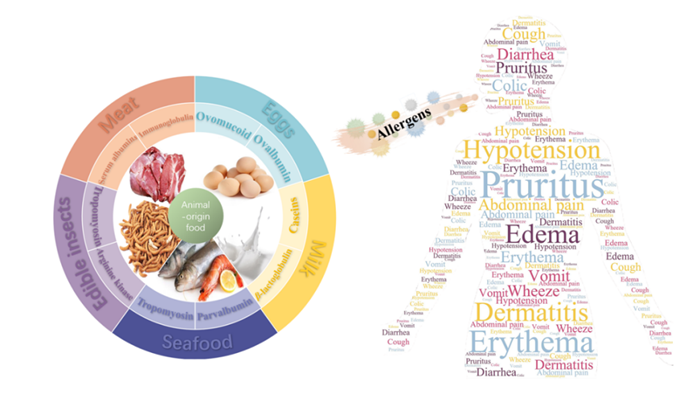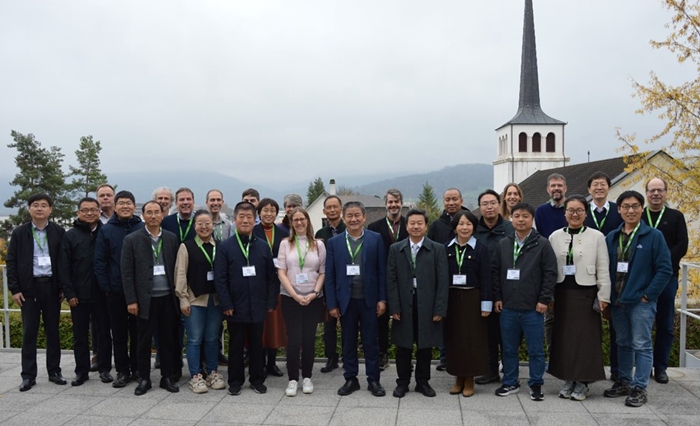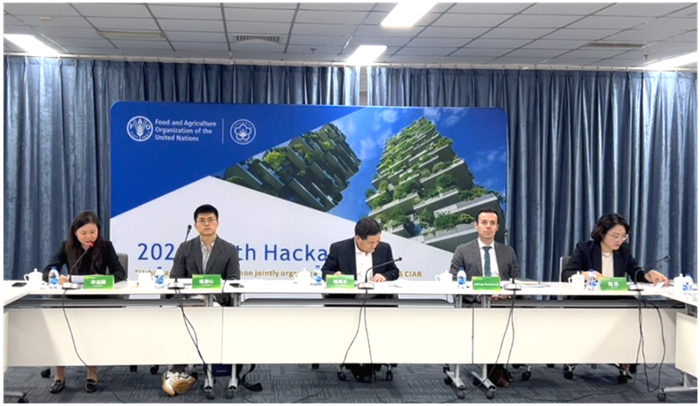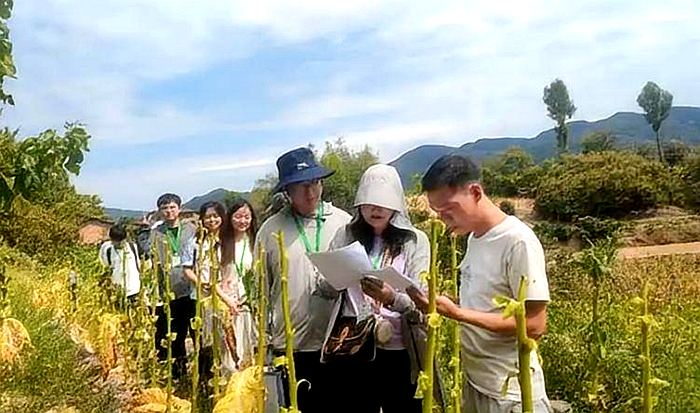Experts from IAR Reviewed Allergy Risks of Animal-Derived Foods and the Reduction Technologies in Food Processing
Recently, the Resource Insect Product Processing and Functional Evaluation Team of the Institute of Apicultural Research, CAAS, collaborated with the Food Safety and Molecular Nutrition Innovation Team from the College of Food Science and Nutritional Engineering, China Agricultural University, to review the research progress on the risks of animal-derived food allergies, allergen detection, and processing mitigation technologies. The findings were published in Trends in Food Science & Technology .

Food allergies are primarily influenced by genetic and environmental factors, with dietary factors in the environment playing a dominant role. Animal-derived foods, while serving as a critical source of protein for humans, are also a major cause of food allergies affecting a large global population. Research has shown that early exposure to various microbes and allergenic foods during infancy can help prevent food allergies, while altering dietary patterns can aid in the prevention and treatment of food allergies. Allergen detection is crucial for allergy prevention. The combined application of bioinformatics and multiple allergen detection methods not only enables precise identification and prediction of allergens but also reveals the interplay between genetic and environmental factors in allergic diseases, making it an essential tool in allergen research.
Appropriate food processing techniques can effectively reduce the allergenicity of food allergens; however, current technologies face limitations. Future efforts should emphasize the pivotal role of dietary factors in preventing food allergies, focusing on the development of novel and efficient allergen detection methods and personalized processing mitigation technologies for animal-derived foods to further safeguard consumer health. This review provides a valuable reference for preventing food allergies and advancing the safe and efficient development of animal-derived foods.
This research was supported by the National Key Research and Development Program, the Agricultural Science and Technology Innovation Program of CAAS, and the National Apicultural Industry Technology System Program.
-
 Dec 05, 2024China-CABI Project Development Workshop Held in Delémont, Switzerland
Dec 05, 2024China-CABI Project Development Workshop Held in Delémont, Switzerland -
 Dec 05, 2024Ministerial Workshop on Digital Agriculture and Rural Revitalization for BRI Partner Countries Held at CAAS
Dec 05, 2024Ministerial Workshop on Digital Agriculture and Rural Revitalization for BRI Partner Countries Held at CAAS -
 Dec 05, 2024CIAR and FGV Deepen Cooperation to Promote the Development of China-Brazil Green Agricultural Products Value Chain
Dec 05, 2024CIAR and FGV Deepen Cooperation to Promote the Development of China-Brazil Green Agricultural Products Value Chain -
 Dec 05, 20242024 Youth Hackathon for Urban Agriculture Finals Successfully Held in Beijing
Dec 05, 20242024 Youth Hackathon for Urban Agriculture Finals Successfully Held in Beijing -
 Dec 05, 2024Independent Impact Evaluation of Sustaining Poverty Reduction through Agribusiness Development in South Shaanxi (SPRAD) Successfully Completed
Dec 05, 2024Independent Impact Evaluation of Sustaining Poverty Reduction through Agribusiness Development in South Shaanxi (SPRAD) Successfully Completed
